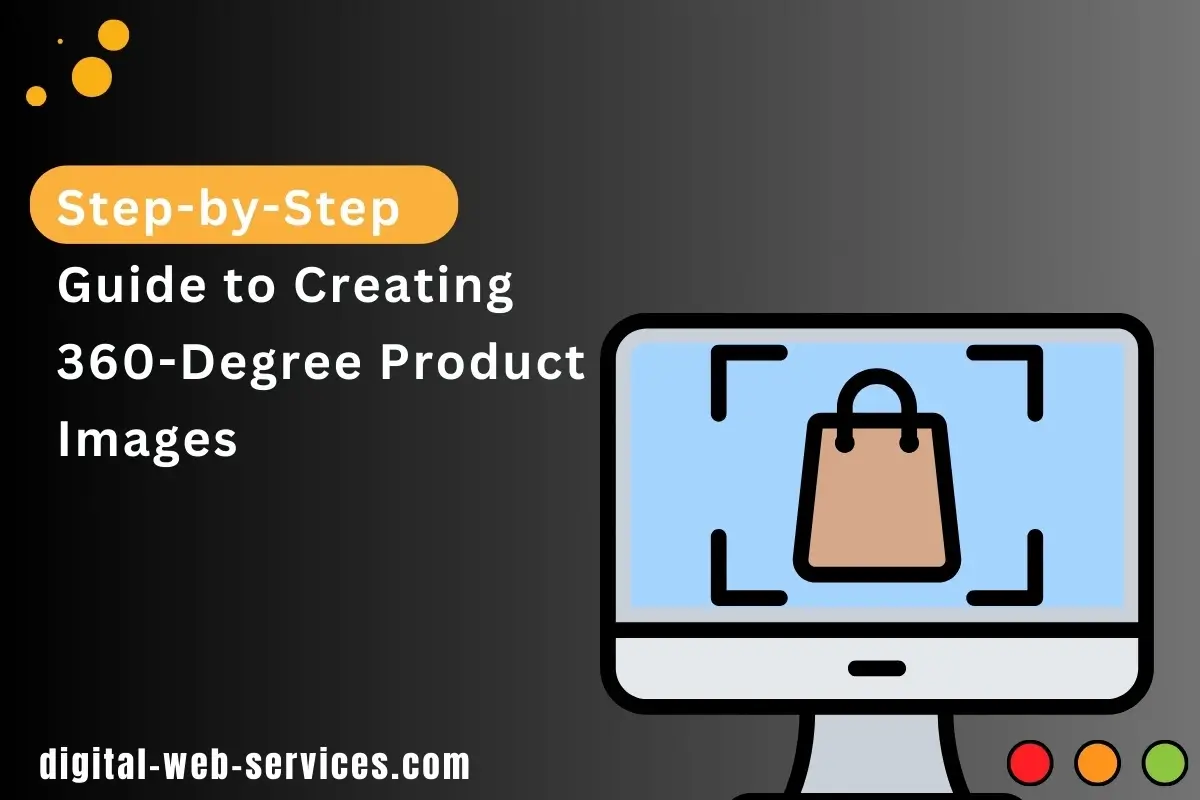
In the competitive e-commerce market, your content and product images play a crucial role in attracting and engaging potential customers. One effective way to stand out is by using 360-degree product images. These images empower your customers to view your products from every angle, guiding them toward a confident purchase decision.
Statistics show that as many as 64% of e-commerce returns occur because the product doesn’t match the description. However, 360-degree photos, augmented reality (AR), and virtual reality (VR) can change that.
This comprehensive guide walks you through the process of creating 360-degree images. From the basics of 360-degree photography to the best tools to make your pictures stand out, you’ll gain a deep understanding of this engaging content marketing form and how it can enhance your e-commerce site.
Understanding 360-degree Product Images
360-degree product images allow customers to view items from any angle, creating a more immersive shopping experience. Photographers create these images by taking multiple product photos from various angles and stitching them together using 360-degree photography techniques.
Interactive product images are vital for excelling in e-commerce, and the benefits of 360 product photography are significant:
- They provide an interactive view of a product, enabling customers to understand it better.
- The interactive nature of these images increases customer engagement, boosting sales.
- They help reduce return rates, as customers better know what they’re ordering.
Therefore, knowing how to create 360-degree product images is a valuable skill for any online retailer. Here’s how to prepare for it:
Preparing for 360-Degree Photography
Creating stunning 360-degree product images requires the right equipment, setting, and techniques.
Equipment
360-degree photography requires time and patience, but you also need a few tools beyond a camera to capture the perfect shots.
In addition to a decent camera, the essential equipment for a 360-degree photo shoot includes a remote shutter, a sturdy tripod, and a turntable to rotate your product. You also need good, reliable lighting and software tools that you can use for stitching images together to create a seamless view.
Setting Requirements
Setting up your workspace is just as important. Here are some vital tips for creating the perfect setting for your 360-degree product image shoot:
- Choose a clean, neutral background to keep the focus on your product.
- Ensure your lighting is even and consistent throughout the shoot to avoid shadows and highlights.
- Position the product centrally on the turntable to capture every angle accurately and create a smaller pivot or rotation space.
Understanding how to create 360-degree images involves attention to detail and preparation. However, the benefits of 360 product photography are well worth the effort, enhancing your customer’s experience and boosting sales. Let’s learn more about the technique of capturing these engaging images next.
Steps to Capturing Perfect 360-Degree Product Images
To capture perfect 360-degree product images, follow these eight simple steps:
- Place the product at the center of the turntable.
- Ensure it is secured in position, considering its pivot point.
- Set up your camera on its tripod and adjust it for optimal exposure and focus.
- Ensure the camera position captures the whole product at every angle without adjusting zoom or focus while rotating.
- Start taking multiple shots at different angles as you rotate the product, capturing the entire product.
- For consistency, keep the camera in the same position on its tripod, and do not adjust the zoom between shots.
- Use a remote shutter to avoid shaking the camera and creating blurry images.
- Ensure your lighting is even across all shots to maintain uniformity.
Extra Tips
To create uniformity, take high-quality photos at equidistant intervals, such as every one, two, ten degrees, etc.
Taking photos from each degree (i.e., 360 photos) will give the most accurate depiction of the image. In contrast, taking a picture every 90 degrees will only give you four photos, defeating the purpose of 360-degree product images. Attach a tape measure on your turntable’s circumference to help you accurately determine angles.
Post-Production Techniques: Editing and Stitching the Images
After capturing your 360-degree product images, import them into your chosen software. Popular options include Adobe Photoshop, Lightroom, and specialized 360-degree photography software like Agisoft Metashape.
Alternatively, explore free image editing tools online. The right software can simplify creating 360-degree images and ensure high-quality, engaging results.
Here’s what to do:
- Begin with basic editing, including cropping out unnecessary parts and correcting colors to ensure consistency.
- Save each image name in the sequence it must be stitched.
- Stitch the edited images together to create a seamless 360-degree view. This involves aligning each shot perfectly around a chosen pivot point to produce a smooth, interactive product image. Most specialized software will have automatic stitching features, but you must make manual adjustments for the best results.
- Be methodical and precise during this process, saving you time and effort in the long run. Professional and accurate 360-degree product photos increase brand credibility and improve engagement and sales.
Publishing and Using 360-Degree Images
When your 360-degree product images are ready for use in your e-commerce store or online portfolio, you need to export them in a suitable file format like JPEG or PNG. However, you must optimize the file sizes to ensure quick loading times without compromising quality. This balance is crucial for maintaining a smooth user experience and reducing bounce rates.
Implementing your interactive product images on your website involves a few best practices:
- Use a reliable plugin or script that supports 360-degree photography.
- Embed the images to allow users to interact with them effortlessly.
- Enhance the user experience by adding zoom features and smooth transitions.
- Include labels, meta tags, and descriptions so your image appears in relevant Google image search results, which can draw customers to your e-commerce site.
Final Words
360-degree product images transform how e-commerce customers interact with your products, offering a detailed and immersive experience.
Following these step-by-step 360-degree product shoot instructions and using the right tools can enhance your e-commerce product images and improve your customers’ user experience. Start creating top-notch 360-degree product photos today to elevate your brand’s online store and captivate your audience.
Digital Web Services (DWS) is a leading IT company specializing in Software Development, Web Application Development, Website Designing, and Digital Marketing. Here are providing all kinds of services and solutions for the digital transformation of any business and website.










